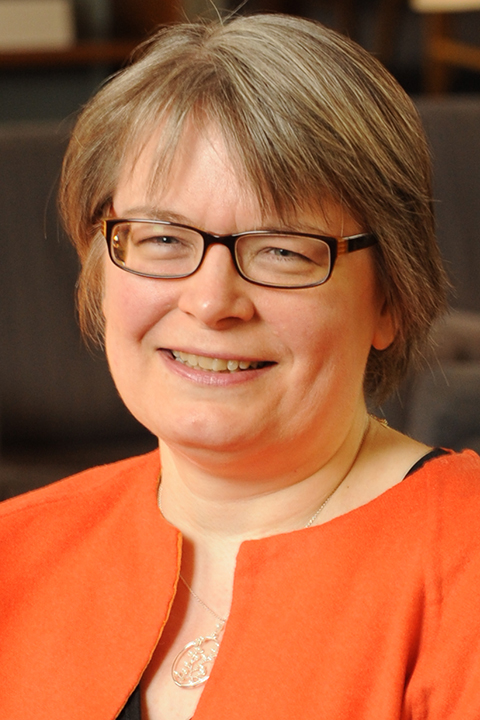Tibetan Studies
Since the 1960s, Columbia University has acquired Tibetan books and serials through the Public Law 480 Program and its successor, the Library of Congress South Asia Cooperative Acquisitions Program (SACAP), based in Delhi. Most materials thus procured were published in India, Nepal, Sikkim, and Bhutan. Since 1999, Columbia has also actively collected Tibetan-language materials from regions in the People’s Republic of China with sizable Tibetan populations (i.e. the Tibet Autonomous Region, Qinghai, Sichuan, Gansu, and Yunnan provinces) and minorities publishing houses (Ch. minzu chubanshe) in Beijing. The Tibetan collection at Columbia University is now the most comprehensive among university libraries in North America, with more than 12,000 titles and 15,000 volumes in Tibetan and Dzongkha —in addition to extensive holdings on Tibetan subjects in Chinese and Western languages.
The Tibetan Studies Librarian actively collects humanistic and social science print and electronic materials written or otherwise recorded in the vernacular languages of Tibetan populations in China, South Asia, and the diaspora, with special emphasis on Tibetan history, literature, and Buddhism. Western-language materials are the responsibility of the East Asian Studies Librarian of the C.V. Starr East Asian Library. Chinese-language materials on Tibet and Inner Asia are acquired by, and in cooperation with, the Chinese Studies Librarian.
The Tibetan Studies print collection is primarily housed in the C.V. Starr East Asian Library, and the Libraries’ off-site storage facility (ReCAP). Modern-format books are intershelved in the main stacks, while a large portion of our traditional pothi-style books (dpe cha or dpe cha sna ring) are stored in the custom-designed Tibetan Pecha collection area on the 100-level of the East Asian Library. It is the library’s policy to bind pothi-style books for circulation purposes. Any works that are still in loose-leaf format must be used on site. Columbia University Libraries provides access to fifteen different Tibetan Buddhist Canon editions, either through print volumes or electronic access. Our oldest print edition is the Narthang Canon, which is shelved together with a dozen other rare texts in the Rare Book & Manuscript Library on the 6th floor of Butler Library. Tibetan art catalogs are held primarily at the Avery Architectural & Fine Arts Library and are noncirculating.
Columbia’s Tibetan Studies collection is also noteworthy for its archival holdings, including the Tharchin Collection, the Lhasa Neighborhood Committee Number Three Records, and the Collection on Lama Govinda, as well as two archives in process: the Tibet Information Network (TIN) Archives and the Meg McLagan Collection on Tibetan exile activity during the 1990s. One can perform a cross-collection search for Tibetan archival materials via the Archival Collections Portal. Many rare materials, including oral histories, have received conservation treatment and are being digitized for long-term preservation.
Cooperative partnerships with the University of Toronto and with Harvard University, Princeton University, and The New York Public Library further expand the range of resources at the disposal of students and faculty both locally and through the Borrow Direct and Interlibrary Loan (ILL) networks. For more information, see the Tibetan Studies section of the C.V. Starr East Asian Library website.
a. Undergraduate
The Tibetan Studies collection supports the faculty of and undergraduate students enrolled at Columbia College, Barnard College, and the School of General Studies by providing course reserve materials and reference support, particularly in Western languages. Advanced undergraduate majors in Columbia’s Department of East Asian Languages & Cultures and the Department of Religion also benefit from vernacular-language materials.
b. Graduate and Professional Schools
As an integral component of Columbia’s outstanding interdisciplinary resources, the Tibetan Studies Collection is diverse, providing primary and secondary sources for a broad spectrum of subjects in the humanities and social sciences, human rights, and education. The Collection is especially developed to meet the research and teaching needs of graduate students and faculty at Columbia University. This includes, but is not limited to, the Department of East Asian Languages & Cultures, the Department of Religion, the Modern Tibetan Studies Program of the Weatherhead East Asian Institute, and the MARSEA program of the School of International and Public Affairs. Graduate students at Teachers College and the Columbia School of Social Work also draw on the Tibetan Studies Collection for primary and secondary resources. With particularly rich and diverse holdings in vernacular materials, Columbia University Libraries also serves as a resource for Tibetan studies scholars at other institutions through Borrow Direct, Interlibrary Loan, and on-site access.
c. Institutes, Interdisciplinary Programs, etc.
Faculty, visiting scholars, post-doctoral scholars, and the students of the Weatherhead East Asian Institute, with which the C.V. Starr East Asian Library has a close working relationship, are regularly served by the Tibetan collection. The institute every year contributes funding to the East Asian Library for the acquisition of vernacular-language materials, including Tibetan.
d. Course Reserves
Selection for course reserves is up to the individual faculty member. The Librarian will do whatever is possible to secure specific materials lacking in the Collection.
a. Print
Columbia actively collects print materials published in the region on the following subjects: anthropology, archaeology, art and architecture, Buddhism, economy, environmental issues, folklore, genealogy, history, performing arts, philology and linguistics, law and society, literature, politics and government, social history, and sociology. Reference works in a wide array of subject areas are actively acquired and mostly housed in the main reading room of the C.V. Starr East Asian Library with non-circulating status. Specialized reference titles are located off site. Additionally, the East Asian Library subscribes to nearly three dozen prominent Tibetan-language periodicals and newspapers and has acquired more than one hundred additional titles via acquisitions trips and local vendors.
b. Digital Collections
Columbia University Libraries has purchased all fifteen “Core Text Collections” (each comprising 1,000 scanned volumes) distributed by the Buddhist Digital Resource Center (formerly known as Tibetan Buddhist Resource Center). While Columbia University Libraries prioritizes electronic format publications, consideration is also given to the long-term viability of hosting organizations. The East Asian Library thus typically retains the print or microfilm versions of Tibetan-language publications for preservation purposes. Tibetan population and other statistics are generally available in the China Data Online database, though some datasets are lacking for the Tibet Autonomous Region. In partnership with Princeton, New York University, and Yale University, Columbia is actively involved in the Ivy Plus Library Confederation to preserve endangered websites in the region. The Web Resources Collection Program archives selected websites in thematic areas corresponding to existing collection strengths. Tibetan-related websites preserved through this initiative can be accessed via the portal to this collection in Archive-It.
c. Media
Columbia University has a rich collection of Tibetan audio visual materials, including commercial feature films as well as independently-produced collections of music by individual performers and music ensembles. Most audio visual materials are non-circulating and must be viewed in the Periodicals & Microform Reading Room (401 Butler Library). While feature films are stored on site at Butler, users need to request documentary films and musical materials from the Libraries’ off-site storage facility (ReCAP), using the “off site” link in CLIO and allow two to four days for retrieval.
d. Languages Collected
The Libraries collects Tibetan, Chinese, and English languages extensively, and related languages (e.g. Dzongkha and Ladakhi) selectively. The Tibetan Studies Librarian is responsible for Tibetan-language acquisitions, but cooperates with other librarians (especially the Chinese Studies Librarian and the East Asian Studies Librarian) to purchase materials in other languages.
e. Chronological Focus
There is no chronological limit on our collecting of secondary materials related to the broader Tibetan cultural region. A number of old manuscripts (primarily Bon texts or Buddhist sutras) are held by the Rare Book & Manuscript Library. At the C.V. Starr East Asian Library, the Tibetan Studies Librarian focuses primarily on collecting primary materials to support the research on topics related to Tibetan Buddhism and Tibetan history from the 17th century to the present.
f. Geographical Focus
The Libraries collect materials about all Tibetan regions and peoples in Asia and abroad, with no restriction on place of publication. This includes materials written or otherwise created in China, Mongolia, and elsewhere in Inner Asia, as well the Himalayan regions of northern India, Sikkim and Bhutan, etc.
g. Imprint Dates Collected
We collect currently published (i.e. within the last three years) materials extensively, and earlier imprints selectively. When antiquarian acquisitions are offered via gift or purchase, duplicates cannot be fielded. However, rare or unique materials from any period are readily considered.
Materials that are very rarely held or unique to Columbia University, including physical artifacts, are collected for their value as research materials and primarily for their content. The Libraries may accept but does not purchase materials for their aesthetic or collectible value. Any artifacts (for example, seals and other stationery items) and archives are acquired for their significance for Tibetan historical research.
a. Consortia and Collaborative Collecting with Other Institutions
The Tibetan Studies Librarian at Columbia also serves as Acquisitions and Reference Librarian for the University of Toronto by a cooperative agreement signed in 2013. Columbia University took a leading role in forming the Tibetan Resources Working Group comprised of librarians and other curators of Tibetan collections at research institutions, and continues to work cooperatively with fellow member librarians. The C.V. Starr East Asian Library also coordinates with other libraries on campus, such as the Lehman Social Sciences Library, Butler Library, the Rare Book & Manuscript Library, and Avery Architectural & Fine Arts Library, to avoid duplication and to support Tibetological purchases that might be housed outside the East Asian Library.
b. Location Decisions and Selection for ReCAP
Duplication of titles is generally limited to works identified by faculty as being central to a specific course. In these cases, no more than a few copies are obtained, one of which should be placed by the faculty member on reserve. Otherwise, it is the Librarian's responsibility to determine the shelving location for an acquisition, whether in reference, the East Asian Library stacks, special collections, or off-site storage. Approximately sixty percent of our modern format collection is stored off site. Only the last two years of publication for any periodical are stored on site; all previous issues are stored in the ReCAP facility. Due to space restrictions at the East Asian Library, the default location for multi-volume sets is off site. While thirty percent of our dpe-cha are located on the 100-level, the remainder have been sent off site. The Librarian typically retains on-site materials with the following characteristics: (1) closely related to the research interests of Tibetan Studies faculty and advanced graduate students, or courses taught here; (2) items which circulate frequently; (3) a collection of articles, essays, or literary works that are noteworthy but lack detailed content notes in the bibliographic record; (4) special collections deemed by the Librarian as particularly interesting for presentation purposes or which might be damaged by too-frequent transportation from ReCAP (e.g. visual materials, rare photos, charts, oral accounts); and (5) items requested for acquisition by a faculty member or graduate student (and which do not comprise a large set).
c. Deaccessioning
Titles are generally deaccessioned only in cases where the physical copy is disintegrating and no longer serviceable in print/physical format. In these instances, the Librarian will evaluate whether to make a preservation photocopy, to create or acquire a digital surrogate, and/or whether to replace the physical copy with another. Resources on obsolete formats are reviewed by librarians on a case-by-case basis; in instances where the original format has artifactual value, it will be retained even after it has been digitized or otherwise reformatted. Distinctive collections held in the Rare Book & Manuscript Library (RBML), the C.V. Starr East Asian Library, Avery Architectural & Fine Arts Library, and the Burke Library at Union Theological Seminary are not deaccessioned.
d. Digitization and Preservation
The most prominent text digitally preserved is the Tibet Mirror newspaper, a joint project with the Beinecke Rare Book & Manuscript Library at Yale University, the Far East Libraries at the Collège de France, and the Musée Guimet (Paris, France). This resource and other Tibetan studies holdings that have been digitized by Columbia can be viewed on the Internet Archive. In 2018, the Weatherhead East Asian Institute generously granted monies to digitally preserve several thousand Tibetan studies items from the special collections of the C.V. Starr East Asian Library. These images will be hosted on the Internet Archive and the Digital Library Collections website by July 2019.

Gary Hausman
South Asian Studies Librarian
- Global Studies

Chengzhi Wang
Chinese Studies Librarian
- Starr East Asian Library

Jane Siegel
Rare Book Librarian
- Rare Book & Manuscript Library
Last updated: April 1, 2019